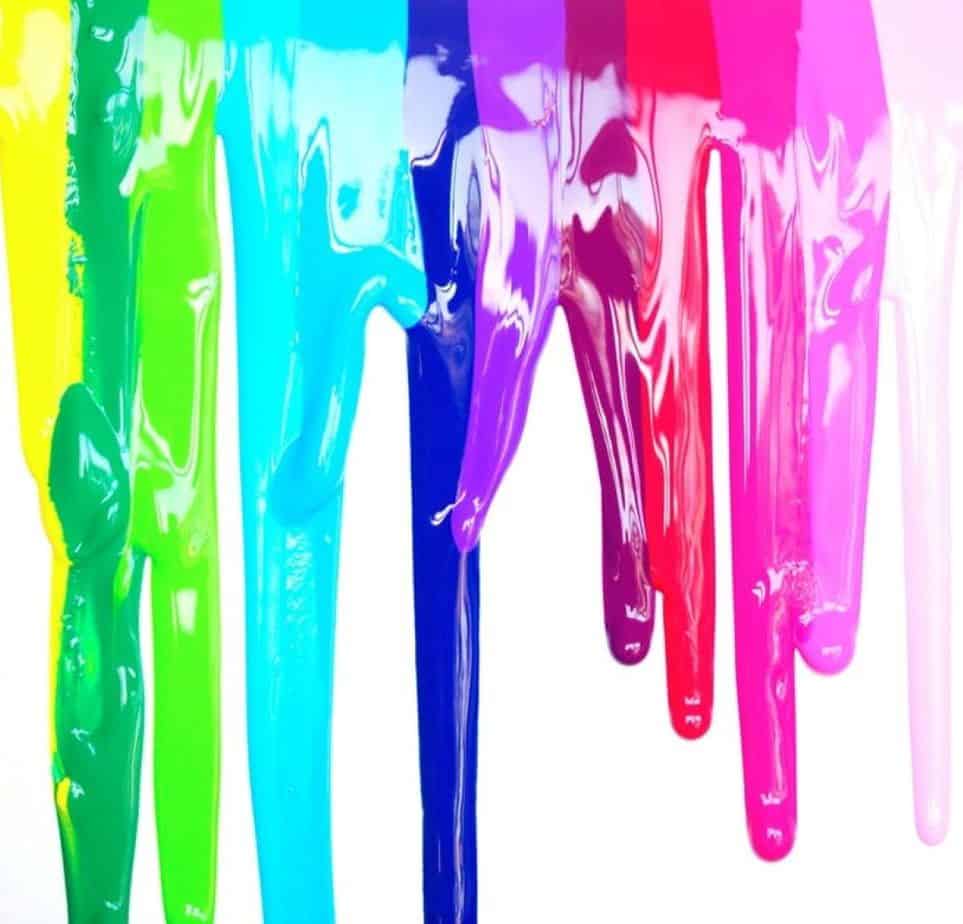Many wonder if water based paints can be used in an airbrush, and if so they then ask how to go about thinning (reducing) the paint? Well, today we
I don’t know about you, but I’m always on the lookout for methods to save some money in my airbrush endeavor. And for the most part I have found water based paints (Such as acrylics) to be cheaper then the solvent based options. At least in my local stores that is.
So this kinda begs the question as to whether or not Water Based paints can be used in an airbrush?
Well, Water based paints (such as acrylics) tend to be preferred in the airbrush industry, as it is safer to use, and better on the environment. So yes, water based paints can be used in an airbrush. But it must be thinned to the right consistency before running it through your airbrush.
Though water based paints do have their drawbacks that you should be aware of. But the drawbacks are minimal compared to the advantages.
We’ll get to the drawbacks of water based paints in a moment, but first let’s
Airbrushing Using Water Based Paints
Like stated above airbrushing with water based paints is preferred by the majority of airbrush artists. Granted, depending on the job to be painted. You may be required to use a solvent / oil based paint, depending on the look you are going for.
But, for the most part (based on the health impact) most if not all airbrush artists out there would opt for water based paints 100% of the time if they could achieve the same outcome as seen using solvent based paints.
But solvent based paints still have their place.
Now, back to the original question, Using water based paints in an airbrush works similarly to oil / solvent based paints. However, the process of thinning the paint, and clean up is going to be different between the two.
Well, I guess the process is virtually the same, but the solutions used for thinning, and paint cleanup changes substantially between water based
Overall, water based, and solvent based paints have their places. Nonetheless, with modern technology the advantages of solvent based paints
I wouldn’t be surprised to one day see water based paints completely phase out solvent based paints.
Advantages Of Airbrushing With Water Based Paint!
| Low Toxicity – compared to solvent based |
| Cheaper – in general |
| Simpler To Reduce |
| Easy To Clean Up |
| Can Be Reduced Using Common Household Items |
| Drys Quickly – shortly after hitting the canvas |
| More Available – then solvent based paints |
Likely the biggest positive to airbrushing with water based paints is its ease of clean up. Since they are water based, in most cases simply water will be enough to clean up any mess left behind.
Where as solvent based paints require the use of Turpentine, or mineral spirits (White spirits) for clean up, to which can be hard on things, such as the O-rings inside your airbrush. Granted modern O-rings are solvent resistant. But if I have a choice I’d rather my airbrush be exposed to water then paint thinner…
Plus once atomized solvent based paints can be quite toxic to anyone in the area, and will require a significant amount more of ventilation when compared to working with water based paints.
Disadvantages Of Airbrushing With Water Based Paint
| Difficult To Use In Colder Temps |
| “Tip Dry” Occurs More Often |
| Less Of A Glossy & Deep Feel |
| Not As Durable As Solvent based – but getting there |
I feel I have made it seem as if Water based paints have no drawbacks, even though I did state that they have drawbacks earlier. But I can assure you, water based paints are not the “Save All!” paint (Yet at least).
The most common Issue I experience when airbrushing with water-based paints is “Tip Dry”. It occurs more often when airbrushing with water based
But simply put, “Tip Dry” is basically dry paint building up on the tip of your airbrush needle as you paint. Tip dry, can cause inconsistent spray patterns, and be one of the culprit’s for what is known as “splattering”.
When using water based paints they tent to dry much quicker then solvent based paints. This quick dry time makes “Tip Dry” more common. However,
Now, above I mentioned you can thin water based paints using common household items. And I’m sure the next question you have is “How to thin water based paints (such as acrylics)?”
How To Thin Water Based Paint For Airbrushing
At the moment I don’t really want to go very deep on the topic of thinning water based paint, as I have already created a large resource going through the
But before you head over there, I do want to at least give you a general overview of the process.
Me personally, I love working with water based paint because of how
Really it is essentially as easy as dumping your paint into a cup, then dumping water in to thin the paint.
Now, using water can reduce water based paints, but sometimes (depending on the manufacturer of your chosen paint) water will have its pitfalls. Specifically, a quicker then usual dry time as you use it.
However, I did place “Quick Dry Time” in the “Advantages
Using just plain water will give a faster dry time then if you were to dilute the water a little with another agent. Such as “Fantastik” (What I Use). I will go into detail about mixing ratios and so forth on my Post about Thinning water based paints.
But truly there is a large variety of different home brews using common household products that people have come up with for both reducing, and cleaning up water based paints.
But, sometimes these home brews can prove to not provide the desired result when it comes to reducing your paint… If you’d like to take the safe route when it comes to reducing your water based paints, you could always simply
Nonetheless, in most situations, the stuff found in these “home brewed” reducers, and cleaners tend to have similar elements to what the manufactures use. But the home brews cost a whole lot less.
Again the link to that post to which will walk you through the process of thinning water based paints is HERE.
Conclusion
So in final, You can use water based paints in your airbrush, such as acrylics, watercolors, gouache and so forth… The most important part is that you take the time to thin the paints to the right consistency, and with the right agents.
Otherwise you will end up with clogging of the airbrush due to, to thick of a paint viscosity. Or you will see watered down (transparent) looking paint due to, over reduction of paint.
But the best parts to using water based paint over solvent based, is the fact of simplicity, and low toxicity levels.
Water based paints are much easier to reduce then that of solvent based paints, and water based paint has very low toxicity levels when compared to its counterpart.
Anyway, I hope you were able to find some value here! If you have any further questions regarding the airbrush do be sure to take a look around the website. Airbrush Insider is dedicated to helping all in the airbrush community!
This is Colt signing off!
Check Out Some Of My Favorite Airbrush Equipment:

